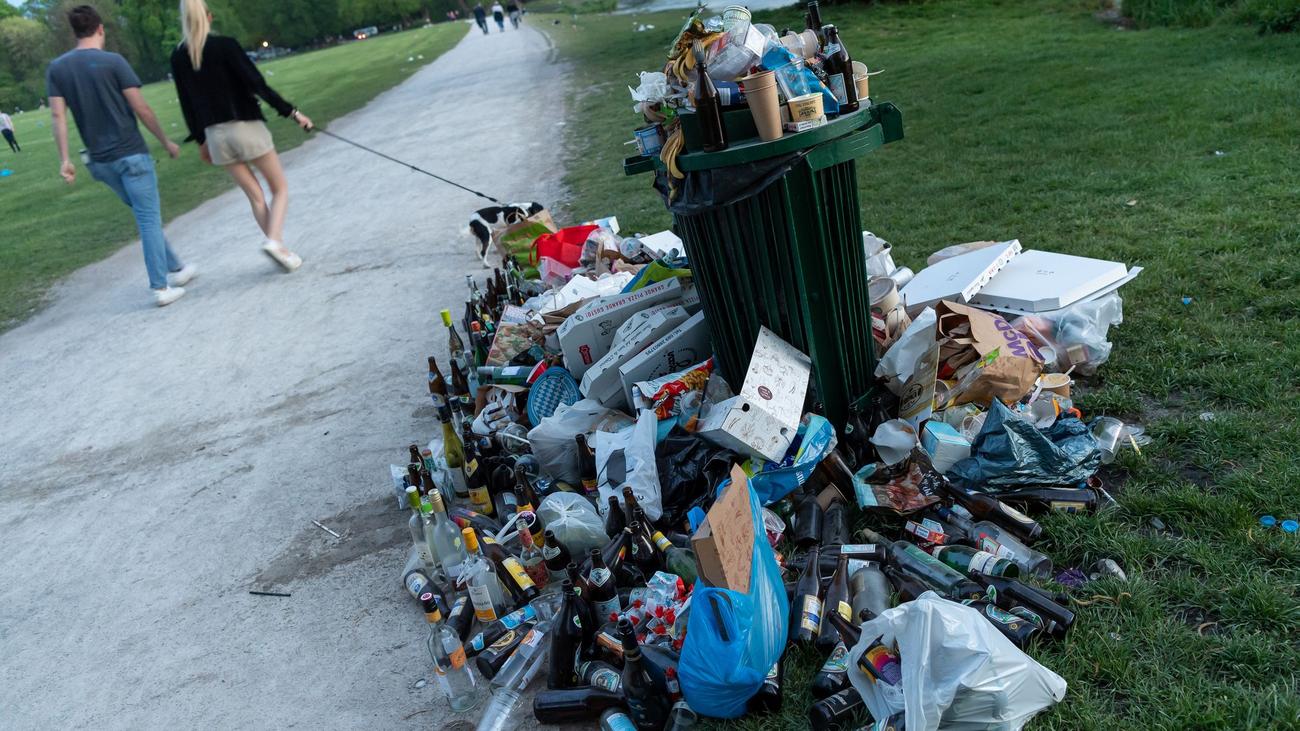
The Bavarian Battle Against Litter: Cities Grapple with Mounting Waste in Public Spaces
Across Bavaria, a concerted effort is underway to combat a rising tide of litter that is increasingly blighting public parks and green spaces. From Munich’s Isar riverbanks to Würzburg’s Mainufer promenades, cities are deploying a range of strategies, including innovative waste management solutions, increased cleaning efforts, and proactive campaigns to promote reusable alternatives. This surge in anti-litter initiatives comes in response to a significant increase in waste generation in recent years, a trend highlighted by a survey conducted by the German Press Agency.
The scale of the problem is particularly acute in Würzburg, where the city reports that the amount of waste collected from public green spaces has more than doubled since 2006. Back then, the city managed roughly 87 tons of litter annually. In recent years, however, that figure has soared to nearly 200 tons. The riverbank areas along the Main River, especially popular among residents, have been particularly affected. City officials attribute the increased waste to the Covid-19 pandemic, which transformed these outdoor spaces into what many consider "second living rooms." To cope with the escalating volume of trash, Würzburg has contracted external cleaning companies to supplement the efforts of the municipal gardening department.
Munich, Bavaria’s capital, is facing similar challenges. The Isar River, a popular recreational area, has emerged as a major hotspot for litter. While the vast majority of the thousands who flock to the Isar behave responsibly, according to a spokesperson for the Building Department, the sheer volume of visitors generates a substantial amount of waste. On an average summer weekend, depending on the weather and the river’s water level, the city collects up to four tons of trash from the Isar’s banks and surrounding areas. A primary driver of this waste surge is the proliferation of to-go food and beverage containers, which rapidly fill up available waste receptacles.
In Augsburg, the city is taking a technologically advanced approach to litter management by deploying "Abfallhaie" – or "Waste Sharks" – innovative trash cans equipped with built-in sensors. These sensors monitor the fill level of the bins and transmit a notification when they need to be emptied. This system aims to prevent overflow and ensure that waste is collected before it can spill into the environment. Augsburg’s waste management and city cleaning services (AWS) have installed 16 of these "Waste Sharks" across the city, with six of them featuring an integrated compaction function. According to the AWS, these compaction models can hold up to 800 liters of waste. The city plans to expand its fleet of "Waste Sharks" in the future. The data underscore the growing litter problem: in the past year, Augsburg’s public waste bins collected over 1,000 tons of waste, a significant jump from the roughly 630 tons collected in 2022.
Nuremberg is addressing the issue by upgrading its existing infrastructure, with plans to replace approximately 120 older waste bins this year. City officials acknowledge that the older models are simply not adequate for the demands of the present day. One particular challenge is the disposal of pizza boxes, as even just a few can quickly clog up the older, smaller bins.
Regensburg is focusing specifically on the problem of pizza box waste, installing dedicated collection stands for these bulky items. In addition to these targeted measures, Regensburg, like many other Bavarian cities, is actively promoting the use of reusable containers through public awareness campaigns. The aim is not only to improve waste disposal practices but also to proactively reduce the amount of waste generated in the first place.
The multi-faceted approach adopted by these Bavarian cities reflects a growing recognition that tackling the litter problem requires a combination of improved infrastructure, efficient cleaning operations, and a shift in public behavior. By investing in smart technologies, expanding waste collection services, and encouraging the adoption of reusable alternatives, these cities are striving to maintain the beauty and cleanliness of their public spaces for residents and visitors alike. The challenge, however, remains significant, and the success of these initiatives will depend on continued commitment and cooperation from both city authorities and the public. The rise in litter is a symptom of changing consumption patterns and increased usage of public spaces, requiring innovative solutions and a collective sense of responsibility to ensure a sustainable and clean environment for future generations. Beyond the specific measures outlined, a broader cultural shift towards environmental consciousness and waste reduction is crucial for achieving lasting progress. This includes promoting responsible consumption habits, fostering a sense of civic pride in maintaining public spaces, and reinforcing the message that littering is unacceptable behavior. Ultimately, the battle against litter in Bavaria is a shared responsibility, requiring the active participation of every citizen to preserve the natural beauty and livability of the region’s cities and landscapes.
